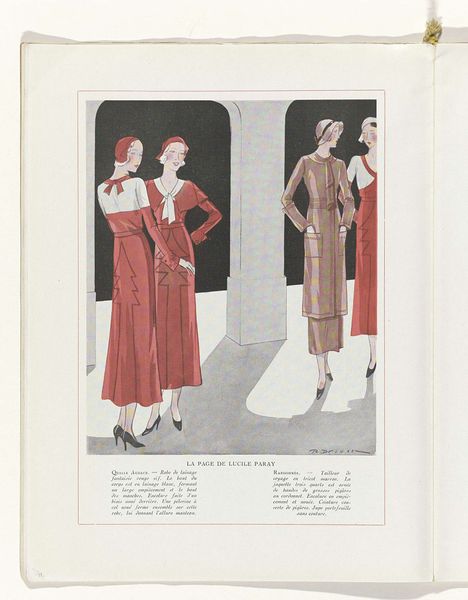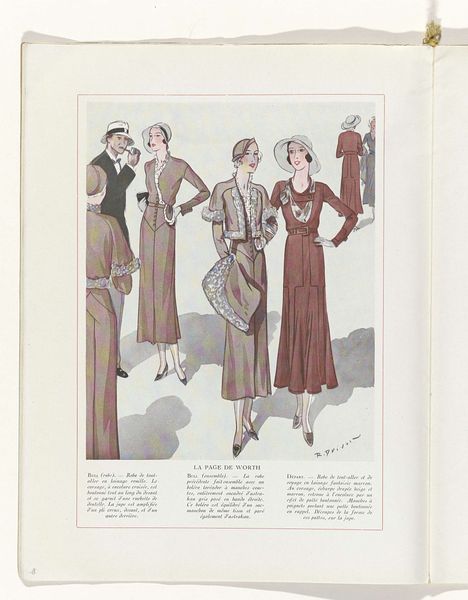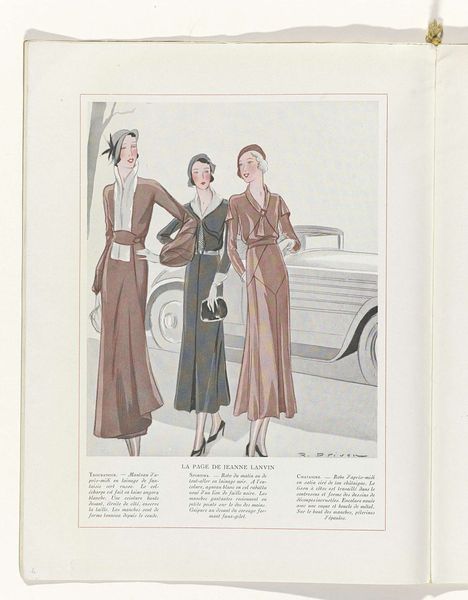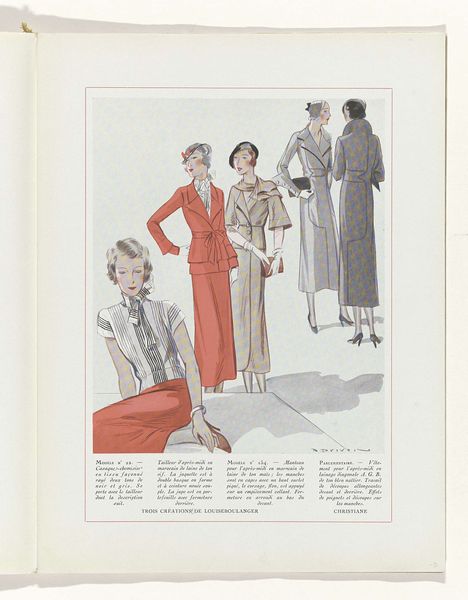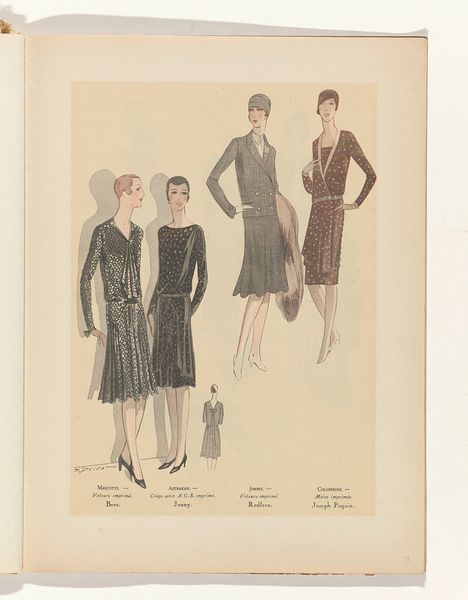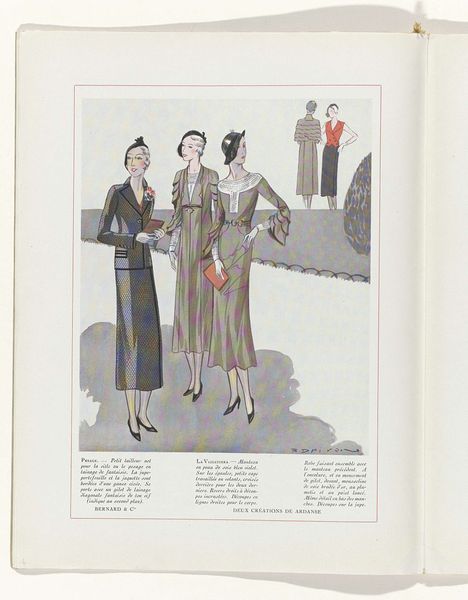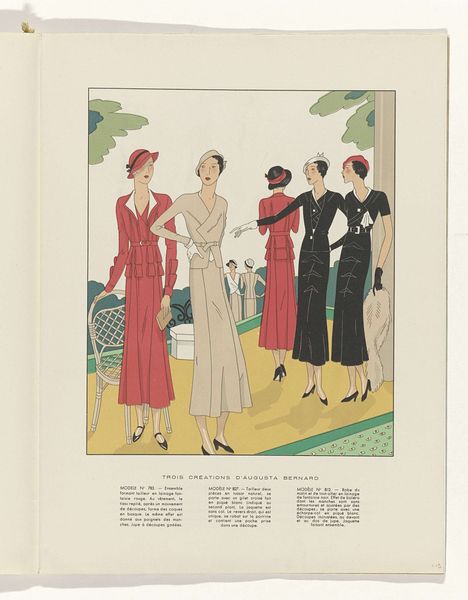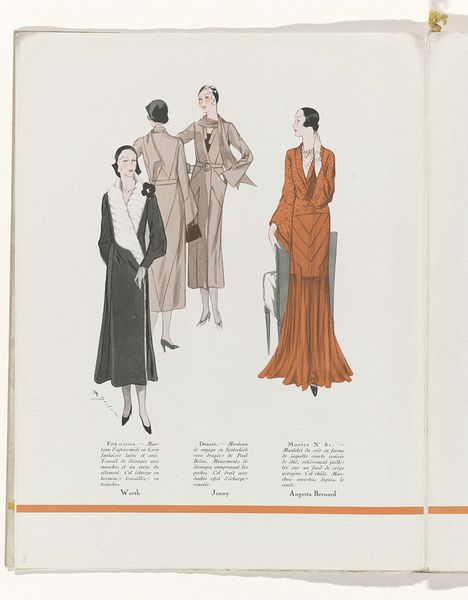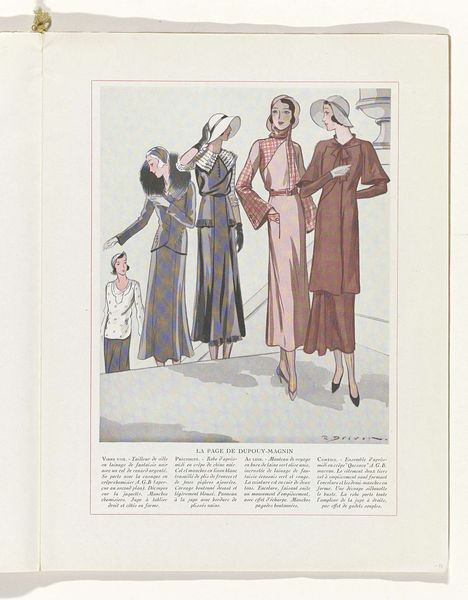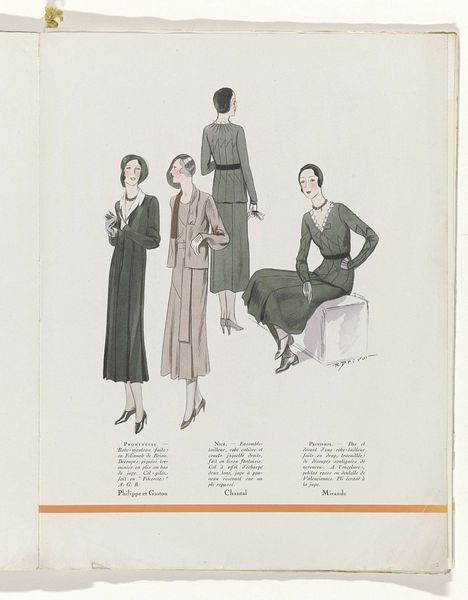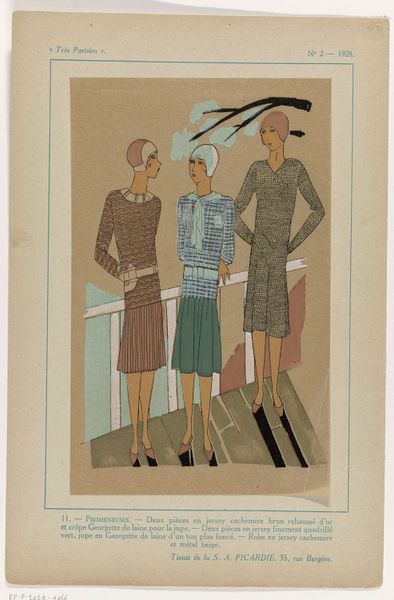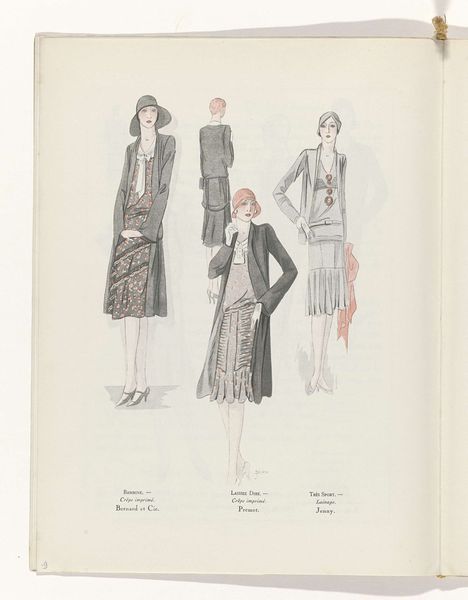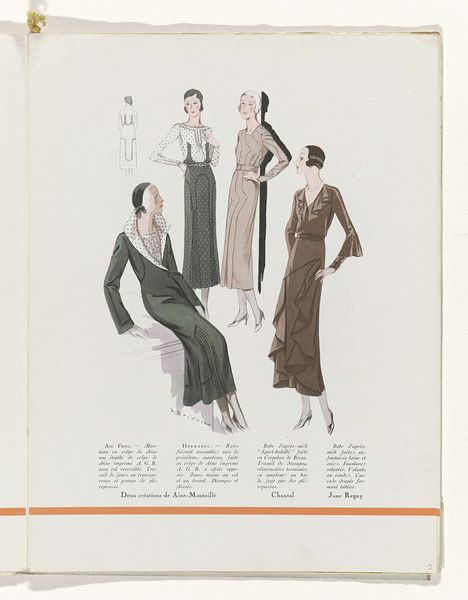
Art - Goût - Beauté, Feuillets de l' élégance féminine, Mars 1932, No. 139, 12e Année, p. 10 1932
0:00
0:00
tempera, paper
#
portrait
#
art-deco
#
tempera
#
traditional media
#
paper
#
historical fashion
#
watercolour illustration
#
genre-painting
Dimensions: height 315 mm, width 240 mm
Copyright: Rijks Museum: Open Domain
Curator: So, we’re looking at “Art - Goût - Beauté, Feuillets de l'élégance féminine, Mars 1932." It's a page from a magazine dedicated to women's fashion, dated March 1932, by an artist known as R. Drivon. It’s done with tempera on paper. Editor: It has such a beautifully faded feel to it, almost like looking at a daydream through a vintage filter. I am getting afternoon tea on the Riviera vibes here. What do you see? Curator: I see it as a perfect artifact of its time. The figures embody the ideal of the modern woman during the interwar period—emancipated but elegant, with a focus on fashionable silhouettes. The styling in the composition draws from Art Deco. These figures and designs speak volumes about the changing roles of women and the fashion industry's response to those shifts. Editor: It's funny you mention that, because despite all the "feminine elegance," there’s something decidedly cool and detached about their gazes. Very stylized. Makes you wonder about the male gaze intended in the original publication versus the contemporary understanding. Curator: Exactly. By looking into this historical piece of media, we can question the intended audience and how the artist both catered to and potentially subverted early 20th-century expectations around women. Also, consider that tempera often allows for flat planes of color and defined line work, emphasizing the artificiality, if not constructedness, of beauty and presentation. Editor: Yes, it feels less about realism, more about presenting archetypes—aspirational figures designed to sell a dream. A dream involving chic hats, apparently. What are the textual components doing? Curator: The French text positioned around the figures describes the ensembles, acting as a sales catalogue of fabrics, silhouettes, and the desirable woman. So text and images mutually constructed ideals of "feminine elegance.” Editor: I hadn’t really noticed the text before, it definitely transforms the way I interpret this artwork now. Thanks. Curator: The work’s value, to me, comes in as an aesthetic time capsule, of not only dress and decor but cultural and societal forces. Editor: It really is like a fragment of a bygone era, capturing fleeting and changing ideas on aesthetics. I can imagine myself stumbling upon this hidden within an old trunk somewhere and treasuring it as an encapsulation of style, freedom, and mystery from another generation.
Comments
No comments
Be the first to comment and join the conversation on the ultimate creative platform.
